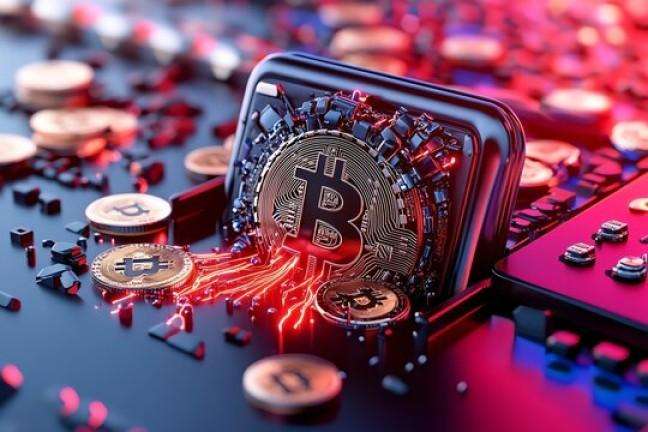Cryptocurrency has evolved rapidly over the past decade, transforming the financial landscape. Among the many types of cryptocurrencies and blockchain technologies that have emerged, one term that has become increasingly important in decentralized finance (DeFi) is Automated Market Makers (AMMs). AMM cryptocurrencies play a crucial role in how digital assets are traded and valued, and understanding their mechanics is key to navigating the future of digital finance. In this article, I’ll take a deep dive into the AMM cryptocurrency, breaking down its components, functions, and the impact it has on the crypto space.
Table of Contents
What is an AMM Cryptocurrency?
At its core, an Automated Market Maker (AMM) is a decentralized exchange (DEX) protocol that allows digital assets to be traded automatically without the need for an order book or a central authority. Instead of matching buy and sell orders like traditional centralized exchanges (CEX), AMMs rely on liquidity pools—collections of funds locked in smart contracts—that facilitate trades.
AMMs operate using smart contracts to control the pricing of assets based on algorithms. The prices of assets are determined by the ratio of tokens in the liquidity pool, and they change dynamically based on supply and demand.
Key Concepts in AMM Cryptocurrencies
To better understand AMM cryptocurrencies, I’ll explain some of the core concepts and features involved.
Liquidity Pools
Liquidity pools are the backbone of AMMs. These pools are created by users who provide liquidity to the exchange by depositing a pair of tokens into a smart contract. For example, if I want to trade Ethereum for USD Coin (USDC), I can deposit both Ethereum and USDC into a liquidity pool. In return, I receive liquidity provider (LP) tokens, which represent my share of the pool.
The liquidity in these pools ensures that there is enough supply for users to trade assets without delays. The deeper the liquidity pool, the more stable and efficient the trading process will be. Liquidity providers earn transaction fees based on their share of the pool.
Algorithmic Pricing
AMMs use algorithmic formulas to determine the price of assets. The most common pricing algorithm used is the constant product formula, also known as the “x * y = k” formula. In this equation:
- “x” represents the quantity of one token in the liquidity pool.
- “y” represents the quantity of the other token.
- “k” is a constant that remains unchanged.
For instance, let’s say I have a pool with 10 ETH and 10,000 USDC. If the constant “k” is 100,000, then the formula will balance the price of ETH and USDC based on their respective quantities in the pool. If someone buys 1 ETH, the number of ETH in the pool will decrease, and the price of ETH will rise accordingly, keeping “k” constant.
Slippage
Slippage occurs when the price of an asset changes between the time a trade is initiated and when it is completed. This happens because AMM-based pools use the dynamic algorithm mentioned earlier. For example, if I attempt to buy a large quantity of an asset from a small liquidity pool, the price may rise significantly due to the imbalance in supply and demand, causing slippage. Larger liquidity pools tend to reduce slippage because they provide more price stability.
Impermanent Loss
One downside of participating in AMMs as a liquidity provider is impermanent loss. This occurs when the value of the tokens in the liquidity pool changes relative to one another. For instance, if I provide liquidity in a pool with ETH and USDC, and the price of ETH rises significantly, I may experience impermanent loss. This loss is “impermanent” because if the price of ETH returns to its original value, the loss will be negated. However, if I withdraw my funds while the value difference still exists, I will realize a loss.
AMMs vs. Centralized Exchanges: A Comparison
To better appreciate the value of AMMs, I’ll compare them to traditional centralized exchanges (CEX). While CEX platforms like Binance or Coinbase are popular for trading cryptocurrencies, they rely on centralized order books to facilitate trades. Here’s a breakdown of the key differences:
| Feature | Automated Market Makers (AMMs) | Centralized Exchanges (CEX) |
|---|---|---|
| Trade Mechanism | Trades happen directly between liquidity pools and users using smart contracts | Trades occur based on order books managed by the exchange |
| Liquidity | Liquidity is provided by users in liquidity pools | Liquidity is provided by market makers and traders |
| Decentralization | Fully decentralized, no third-party involvement | Centralized, with a controlling entity managing operations |
| Transaction Fees | Users earn fees for providing liquidity | Exchanges take a portion of the fees or charges for trading |
| User Control | Users retain control of their funds until they trade | Funds are stored in exchange wallets, which means users don’t have full control |
| Access | Open to anyone with an internet connection | Restricted in some regions, requires account creation |
| Price Determination | Based on algorithmic formulas and the pool’s supply-demand ratio | Based on the order book and market forces |
| Slippage | May occur in low liquidity pools | Usually less slippage due to more stable order books |
Popular AMM Protocols in the Market
There are several well-known AMM protocols in the cryptocurrency space. Each protocol has its own unique features, liquidity mechanisms, and tokenomics. Here’s a look at some of the most popular AMM protocols:
Uniswap
Uniswap is one of the earliest and most widely used AMM protocols. It operates on the Ethereum blockchain and uses the constant product formula for pricing. Liquidity providers earn fees from trades based on the proportional share of their liquidity in the pool.
SushiSwap
SushiSwap is a decentralized exchange that also uses AMM. It is a fork of Uniswap but offers additional features, such as yield farming, governance tokens, and staking options. SushiSwap aims to provide more incentives for liquidity providers through a community-driven governance model.
PancakeSwap
PancakeSwap is an AMM built on the Binance Smart Chain (BSC). It offers lower transaction fees compared to Ethereum-based AMMs, making it more attractive to traders and liquidity providers. PancakeSwap uses a similar model to Uniswap, but with a focus on offering fast and inexpensive transactions.
Balancer
Balancer is a decentralized exchange that allows liquidity providers to create custom liquidity pools with multiple tokens, unlike traditional AMMs that only support two tokens. Balancer’s unique feature is its ability to provide liquidity in pools with up to eight different assets.
Risks of Participating in AMM Cryptocurrencies
While there are many benefits to participating in AMM cryptocurrencies, there are also risks. It’s important to be aware of these risks before deciding to invest in or provide liquidity to an AMM. Here are some key risks to consider:
Impermanent Loss
As mentioned earlier, impermanent loss is a significant risk for liquidity providers. This occurs when the value of the assets in the liquidity pool changes relative to each other. If the price of one asset rises or falls significantly, the value of the total liquidity in the pool may not match the value it would have had if I had simply held the assets outside the pool.
Smart Contract Vulnerabilities
AMMs operate on blockchain smart contracts, and while these contracts are designed to be secure, they are still subject to vulnerabilities. If a smart contract is compromised, it could lead to the loss of funds. I recommend being cautious and ensuring the AMM protocol has been audited by reputable third parties before participating.
Low Liquidity and Slippage
In low liquidity pools, the price of assets can change drastically with large trades, resulting in slippage. If I am trading large amounts of a less-liquid token, the price may shift significantly during the transaction, causing me to pay more or receive less than expected.
Regulatory Risk
The regulatory environment around AMM cryptocurrencies and decentralized finance is still evolving. Governments and financial institutions may impose regulations that affect how AMM protocols operate, or they may restrict access to certain platforms. As a participant, I need to stay informed about legal changes that could affect my investments.
Conclusion: The Future of AMM Cryptocurrencies
AMM cryptocurrencies represent a significant innovation in the digital finance world. Their ability to facilitate decentralized, automated trading without the need for a central authority has disrupted traditional financial systems. While there are risks associated with participating in AMM protocols, the potential rewards—such as earning transaction fees and being part of the decentralized finance movement—make them an appealing option for many.
Looking ahead, I believe AMMs will continue to evolve. They may integrate new features, offer more efficient mechanisms for price discovery, and become even more widely adopted. However, like any emerging technology, there are still challenges to overcome, such as regulatory concerns, scalability issues, and the complexity of providing liquidity.
For those interested in participating in AMMs, it’s essential to approach them with caution, conduct thorough research, and understand the risks involved. As the AMM space matures, it will be interesting to see how it shapes the future of cryptocurrency trading and decentralized finance.





